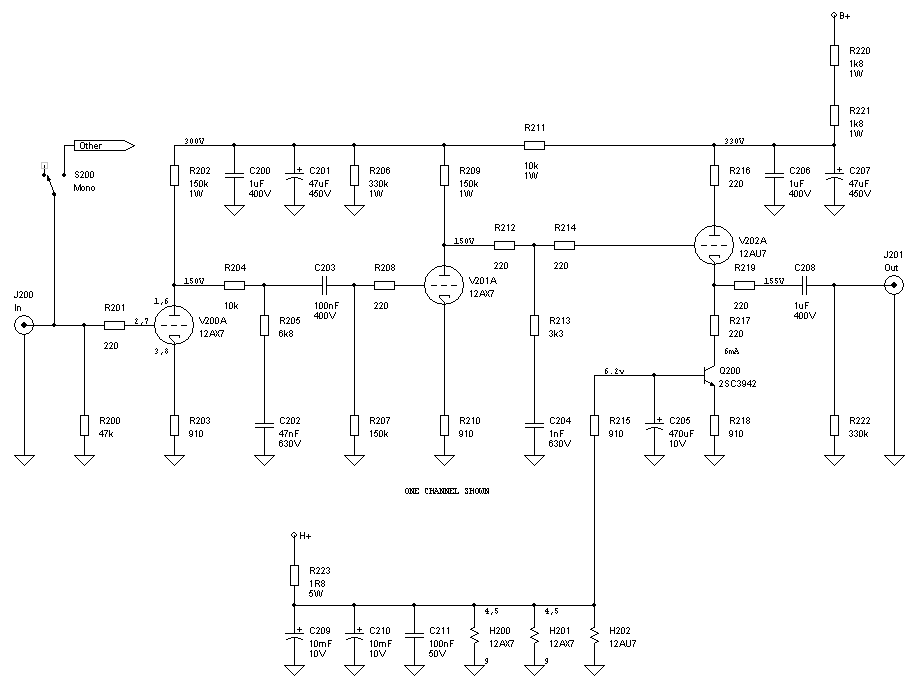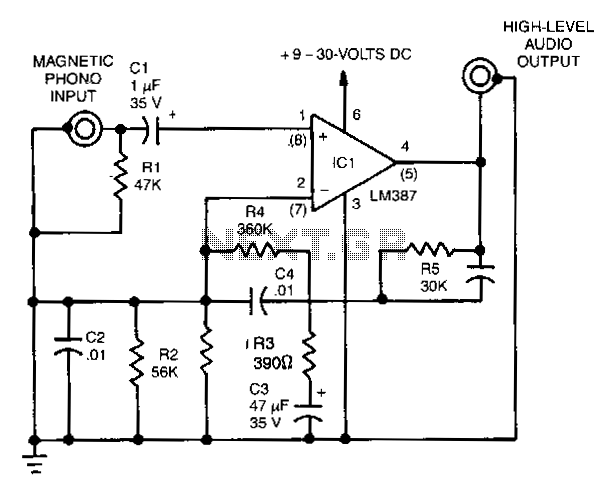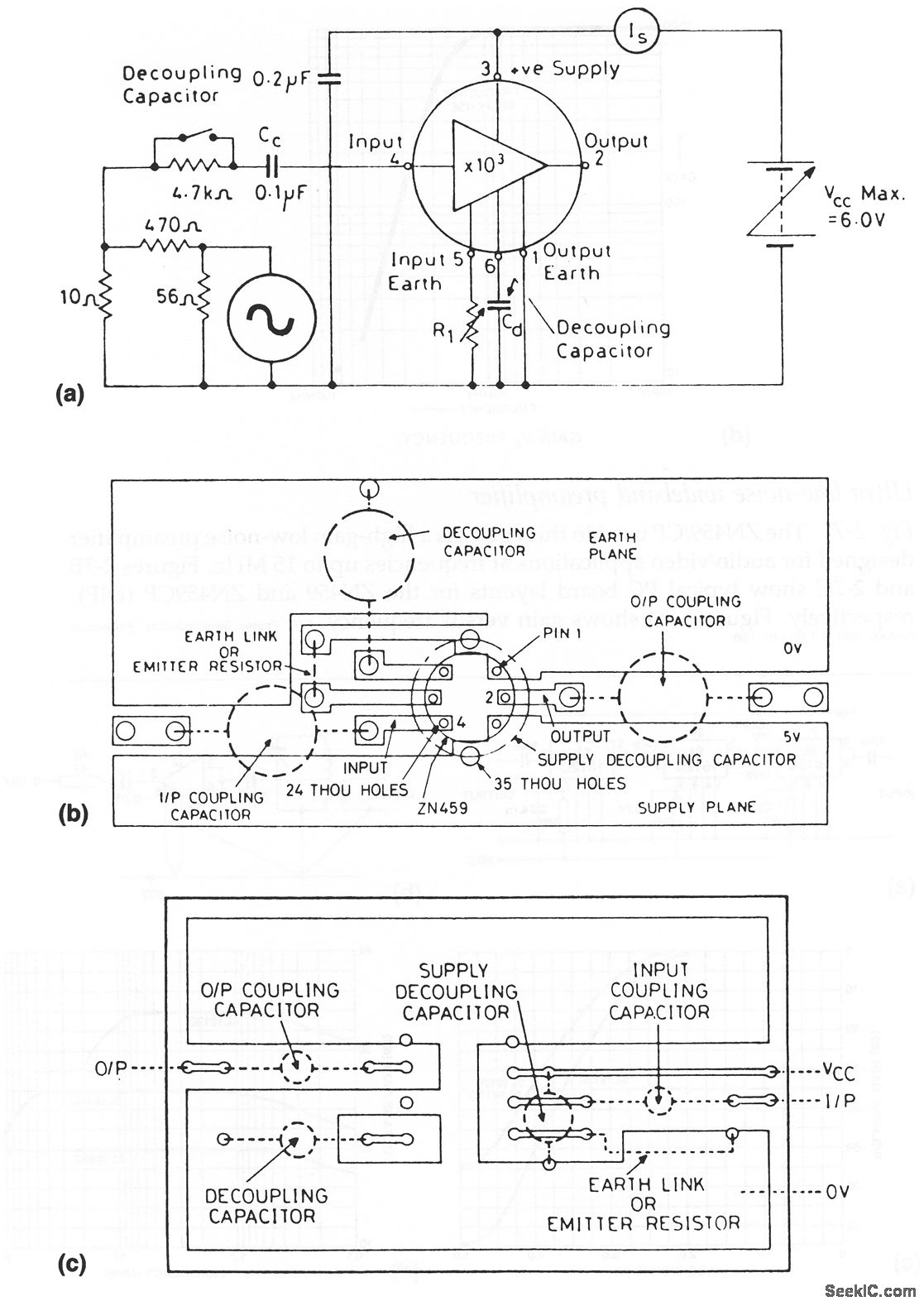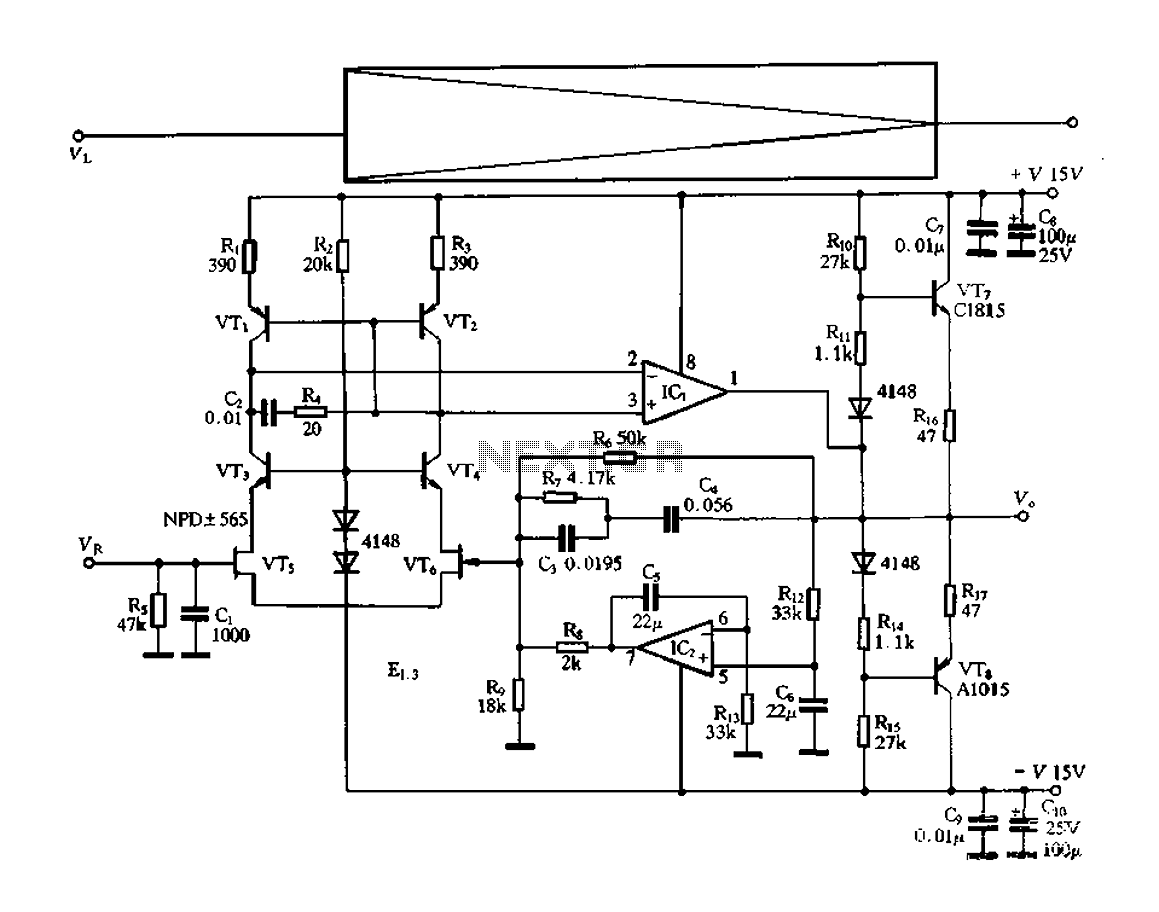
Hi quality Phono Preamplifier

In recent years, following CD's introduction, vinyl recordings have almost disappeared. Nevertheless, a phono preamplifier is still useful for listening to old vinyl discs from a well-preserved collection. This simple but efficient circuit devised for cheap moving-magnet cartridges can be used in connection with both audio power amplifiers shown in preceding pages, featuring low noise, good RIAA frequency response curve, low distortion, and good high-frequency transients behavior due to passive equalization in the 1 to 20KHz range. More: Transistors and associated components provide ± 18V supply to the op-amp, improving headroom and maximum output voltage.
The circuit described is a phono preamplifier specifically designed for moving-magnet cartridges, which are commonly used in vinyl record players. The primary function of this preamplifier is to amplify the low-level audio signals produced by the cartridge to a level suitable for input into standard audio power amplifiers.
The circuit operates with a dual power supply of ± 18V, which allows for a greater headroom, enabling the output signal to remain clean and undistorted even at higher volumes. This is particularly important for maintaining audio fidelity when playing vinyl records, which can have significant dynamic range.
The use of low tolerance components, such as resistors R2, R3, R4, R7, R8, and capacitors C4 and C5, is critical in ensuring that the circuit maintains its performance characteristics over time. These components play a vital role in defining the RIAA equalization curve, which is essential for achieving the correct frequency response for vinyl playback. The RIAA curve compensates for the inherent limitations of vinyl recording, ensuring that the playback sound is balanced and true to the original recording.
The circuit also features passive equalization techniques, which help to manage the frequency response from 1 kHz to 20 kHz. This range encompasses the most critical frequencies for human hearing, thus ensuring that the audio output remains clear and detailed. The low distortion characteristics of the circuit further enhance the listening experience, allowing for the reproduction of high-frequency transients without unwanted artifacts.
Overall, this phono preamplifier circuit is a well-engineered solution for audiophiles who wish to enjoy their vinyl collections with high-quality sound reproduction. Its design emphasizes low noise, accurate frequency response, and minimal distortion, making it an essential component in any vinyl playback system.In recent years, following CD`s introduction, vinyl recordings are almost disappeared. Nevertheless, a phono preamplifier is still useful for listening old vinyl discs from a well preserved collection. This simple but efficient circuit devised for cheap moving-magnet cartridges, can be used in connection with both audio power amplifiers shown in preceding pages, featuring low noise, good RIAA frequency response curve, low distortion and good high frequency transients behaviour due to passive equalization in the 1 to 20KHz range.
Transistors and associated components provide ± 18V supply to the op-amp, improving headroom and maximum output voltage. Notes: * R2, R3, R4, R7, R8, C4 & C5 should be low tolerance types. * Schematic shows left cha 🔗 External reference
The circuit described is a phono preamplifier specifically designed for moving-magnet cartridges, which are commonly used in vinyl record players. The primary function of this preamplifier is to amplify the low-level audio signals produced by the cartridge to a level suitable for input into standard audio power amplifiers.
The circuit operates with a dual power supply of ± 18V, which allows for a greater headroom, enabling the output signal to remain clean and undistorted even at higher volumes. This is particularly important for maintaining audio fidelity when playing vinyl records, which can have significant dynamic range.
The use of low tolerance components, such as resistors R2, R3, R4, R7, R8, and capacitors C4 and C5, is critical in ensuring that the circuit maintains its performance characteristics over time. These components play a vital role in defining the RIAA equalization curve, which is essential for achieving the correct frequency response for vinyl playback. The RIAA curve compensates for the inherent limitations of vinyl recording, ensuring that the playback sound is balanced and true to the original recording.
The circuit also features passive equalization techniques, which help to manage the frequency response from 1 kHz to 20 kHz. This range encompasses the most critical frequencies for human hearing, thus ensuring that the audio output remains clear and detailed. The low distortion characteristics of the circuit further enhance the listening experience, allowing for the reproduction of high-frequency transients without unwanted artifacts.
Overall, this phono preamplifier circuit is a well-engineered solution for audiophiles who wish to enjoy their vinyl collections with high-quality sound reproduction. Its design emphasizes low noise, accurate frequency response, and minimal distortion, making it an essential component in any vinyl playback system.In recent years, following CD`s introduction, vinyl recordings are almost disappeared. Nevertheless, a phono preamplifier is still useful for listening old vinyl discs from a well preserved collection. This simple but efficient circuit devised for cheap moving-magnet cartridges, can be used in connection with both audio power amplifiers shown in preceding pages, featuring low noise, good RIAA frequency response curve, low distortion and good high frequency transients behaviour due to passive equalization in the 1 to 20KHz range.
Transistors and associated components provide ± 18V supply to the op-amp, improving headroom and maximum output voltage. Notes: * R2, R3, R4, R7, R8, C4 & C5 should be low tolerance types. * Schematic shows left cha 🔗 External reference





